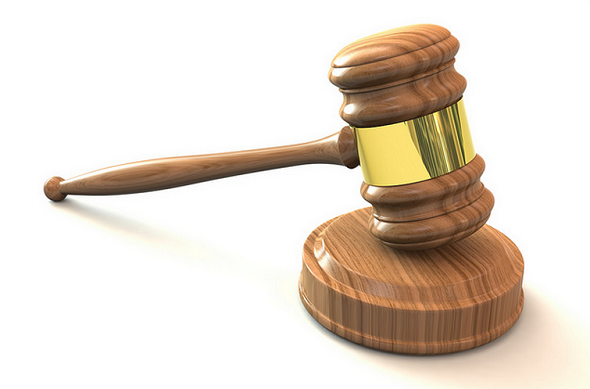Many Russian enterprises choose the simplified taxation system as a simplified taxation system as the scheme of settlements with the state. The motivation of businesses is clear: in this case, the value monetary obligations as a rule, significantly less than with OCH. In some cases, entrepreneurs are forced, however, to think about which specific form of the simplified tax system to choose - which involves calculating fees only on the basis of income or providing for calculations also on the basis of expenses. What criteria can a business owner follow? What are the specifics of the simplified tax system, which implies the simultaneous accounting of both revenue and costs in calculating tax?

The specifics of the simplified tax system in the format of “income minus expenses”
Using the simplified tax system “Revenues minus expenses” is a great opportunity for an entrepreneur to reduce the financial burden in terms of fees to the budget established by law. It can be noted that this system of calculating payments to the state exists along with the simplified tax system “Revenues”. What are the differences between the two?

The simplified tax system “Revenues minus expenses” assumes payment of tax to the state in the amount of 15% of the corresponding base, defined as the difference between revenue and confirmed business expenses. That is, the calculation of fees to the treasury comes from profit. Moreover, the tax should not be less than 1% of the income received. In turn, with the STS "Revenues", the entrepreneur pays to the budget only 6% of the proceeds. The amount of expenses in this case does not matter.
Many entrepreneurs have difficulties with which taxation scheme to choose - the simplified tax system “Income minus expenses” or the simplified tax system, in which only revenue is taken into account. We will study the possible criteria that may be useful for the business owner in solving the problem of how to determine the optimal format for calculating fees to the state.
How to choose the optimal scheme?
It all depends on what is the estimated profitability of the business, on what is the estimated value of production costs or the provision of services. So, it is estimated that if the corresponding indicator is at least 60% of the revenue for the same period of time, then it makes sense to work with the simplified tax system “Revenues minus expenses”.

As a rule, such indicators are typical for the manufacturing sector, when an enterprise purchases raw materials, materials, equipment, pays electricity bills and other resources. If we are talking about the provision of services, then the costs in this case are usually much lower than the indicated figure. Then it becomes more profitable to use the STS "Revenues".
Make a firm decision
The difficulty of using one of the possible taxation schemes is that the legislation of the Russian Federation does not allow an entrepreneur to often switch from one to another. So, if a person has decided that the system under which he will pay the tax is the simplified tax system “Income minus expenses”, then he can switch to the simplified tax system, which involves calculating the fee only from revenue, next year.
Alternative scheme
It can be noted, by the way, that both forms of the simplified tax system “compete” not only among themselves, but also with an alternative taxation scheme - UTII, which assumes a fixed payment of contributions to the state, regardless of the amount of profit. But the types of activities falling under UTII are fewer than those in which you can take advantage of the simplified tax system. In a sense, this makes it easier for the entrepreneur to choose the optimal form of taxation.
How to switch to the simplified tax system?
How can a company switch to the simplified tax system according to the scheme chosen by its head? This can be done in two ways - directly during the registration of a business or in the course of business, but, as we noted above, in a new mode, an enterprise can only work from the year following the filing of the corresponding application with the Federal Tax Service. This procedure is not particularly difficult - all you need to do is send a notification to the Federal Tax Service that reflects the entrepreneur’s desire to work on the simplified tax system only from revenue or the simplified tax system “Income minus expenses”. Specialists of the Federal Tax Service should issue a sample of the relevant document to the applicant.
Kbk
If you look for differences between these forms of the simplified tax system, then they can be traced in the aspect of indicating the BCC in payment documents. The fact is that KBK STS “Revenues minus expenses” differs from what is set for the “simplified” format, which involves calculating the fee to the treasury only from revenue. It is undesirable for an entrepreneur to make mistakes in payment documents: if the corresponding numbers are inaccurate, then the agency accepting the financial transaction - for example, the FIU or the FSS - will not accept the payment and will record default on the part of the company of the obligations stipulated by law. Of course, subsequently, you can send clarifying documents to these state organizations - with adjustments to the BCC, but fines at that time can already be charged. Thus, KBK STS "Revenues minus expenses" should be checked carefully in the payment documents.

Contributions to government funds
There are differences between the two forms of STS as well in terms of the entrepreneur’s obligations to state funds - PFR, FSS and FFOMS. The fact is that if an individual entrepreneur works according to the scheme of the simplified tax system “Revenues”, then he has the right to reduce taxes calculated for payment to the budget by the amount of the corresponding contributions to the funds. In turn, if a person works according to the “Income minus expenses” scheme, then he cannot realize such a privilege - simply because contributions to the PFR, FSS and FFOMS are counted as costs, that is, they reduce the tax base anyway.
Reporting
In addition to the formula for calculating the tax to the budget, communications with funds, the specifics of CSC, there are practically no other differences between the two forms of the simplified tax system. So, in both cases, the business owner must submit a declaration to the Federal Tax Service by March 31 of the year that follows the reporting year, and, at the request of the agency, provide the Income and Expense Book.
Who can work with STS
In respect of both schemes for calculating fees to the treasury, the same legislative restrictions were established in terms of their involvement by enterprises. So, a company cannot work under the simplified tax system “Revenues minus expenses” (LLC, IP - it does not matter) if:
- she has branches in other settlements;
- she is engaged in banking or is an insurance company;
- registered as a pawnshop;
- it employs more than 100 people;
- its revenue for the calendar year exceeded 100 million rubles.

As soon as the company has at least one of the indicated features, it cannot work with the simplified tax system.
Possible expenses
What kind of expenses does the Federal Tax Service accept as those that give grounds to reduce the tax base, if the simplified tax system involves the calculation of the fee based on the difference between revenue and costs? Their list is specified in Art. 346.16 of the Tax Code. That is, such expenses include:
- those related to the acquisition of fixed assets (or their repair, construction, leasing, leasing, assembly);
- reflecting costs of intangible assets (this may be the purchase of programs, registration of patents, exclusive rights, intellectual property);
- those related to the payment of VAT on purchased goods;
- payment of loans, as well as interest on them;
- those aimed at improving fire safety at the enterprise, ensuring security;
- customs payments;
- those aimed at financing travel expenses;
- those related to the maintenance of corporate vehicles;
- aimed at paying for the services of notaries, lawyers, auditors or accountants;
- those associated with the need for the company to provide financial statements (for LLCs operating under the simplified tax system “Income minus expenses”, an appropriate type of account must be kept);
- aimed at the acquisition of writing instruments;
- reflecting the payment of communication services, Internet, mail;
- aimed at settlements with suppliers of advertising services;
- related to the organization of new industries, the purchase of equipment, the arrangement of workshops;
- reflecting the payment of taxes, fees and duties prescribed by law;
- related to the payment of commission fees provided for in contracts;
- reflecting the costs of warranty repair, maintenance;
- aimed at settlements with garbage collection service providers;
- associated with the maintenance of cash registers;
- reflecting costs of litigation;
- aimed at vocational training or retraining of employees;
- related to the necessary examinations or evaluations.

Of course, in all cases, the costs must be documented.
Innovations in 2014
Let us see what legislative changes regulating communications between the business operating under the simplified tax system and the Federal Tax Service entered into force in 2014.
We noted above that LLCs must provide accounting reports to the Federal Tax Service - even if they work according to a “simplification”. This obligation was introduced for business entities in 2014. In turn, it may not be fulfilled by individuals working under the simplified tax system “Income minus expenses” - as well as if they pay taxes on the simplified tax system based on revenue only. In turn, entrepreneurs are nevertheless obliged to practice some elements of accounting - for example, maintaining a Book, which reflects income and expenses. It can sometimes be requested by the FTS.

It can also be noted that in 2014 the amount of contributions to the FIU for entrepreneurs again began to be calculated on the basis of one minimum wage, and not two, as it was in 2013. It can be noted that this also indirectly affected the determination of the amount of taxes calculated on the simplified tax system. If we talk about the “Income minus expenses” scheme, then the legislative base for it has now begun to decrease less noticeably due to a decrease in contributions. In turn, with the simplified tax system, the amount of taxes in pure form payable by entrepreneurs could increase only with revenue, again due to the fact that a smaller amount of contributions could be presented as a deduction. Although the nominal financial burden on IP, in principle, remained the same.
Otherwise, in 2014, the legislator did not introduce special innovations regarding settlements under the simplified tax system. The simplified tax rate “Income minus expenses”, as well as the simplified tax rate on revenue only, remained the same. Payment and reporting deadlines have been preserved.
